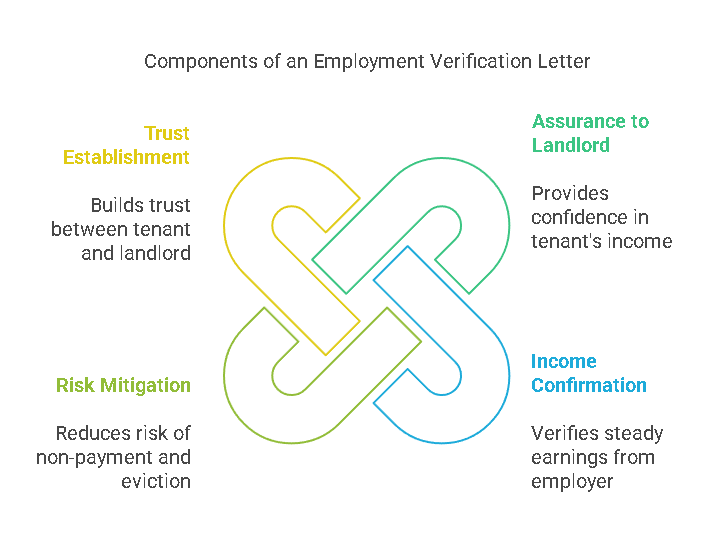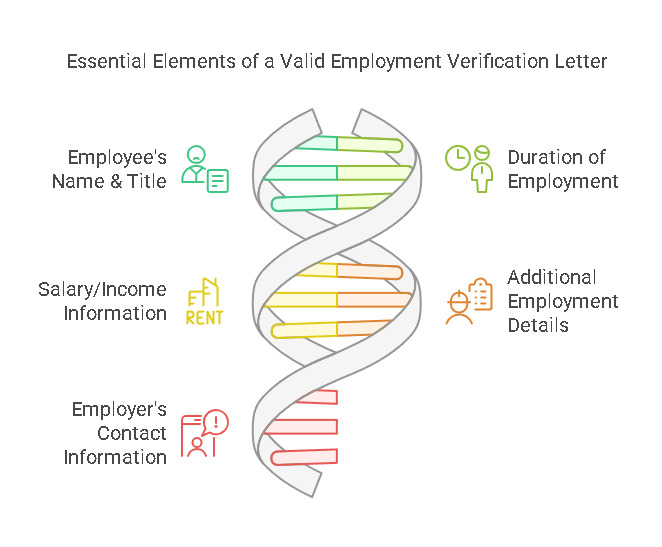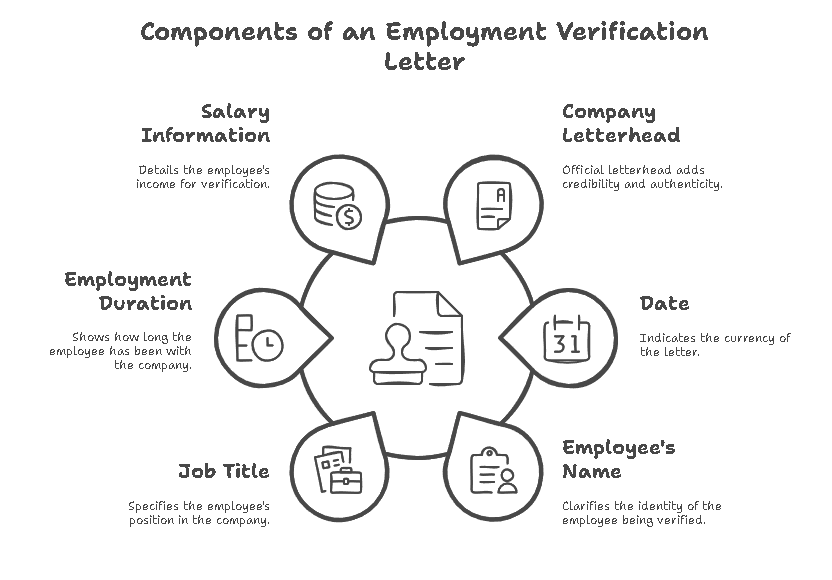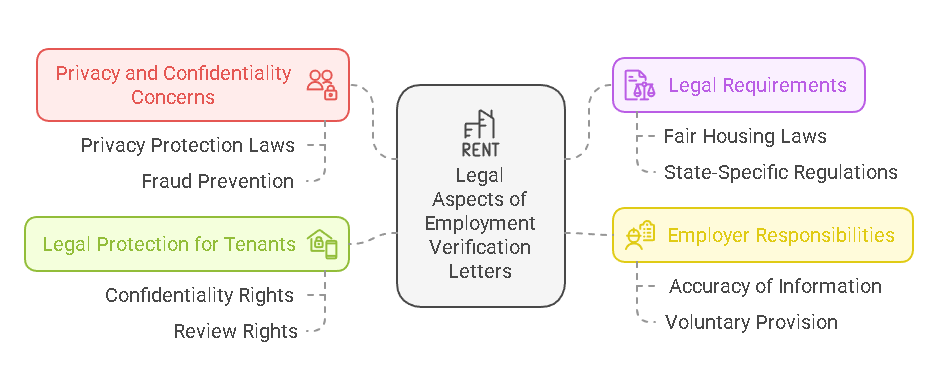Complete Guide to Employment Verification Letters for Apartments

Understanding the Employment Verification Letter for Apartment
An employment verification letter for an apartment is an essential document in the rental process that landlords or property management companies often request to confirm a tenant’s employment status, financial stability, and ability to pay rent on time. This letter serves as proof that a potential tenant is employed and earning a stable income, which helps landlords make informed decisions regarding lease approval.
Why is an Employment Verification Letter Important?

The primary purpose of an employment verification letter is to assure the landlord or property manager that the tenant has sufficient income to pay rent consistently. This is especially important because many landlords rely on rental income as a primary source of revenue. By obtaining an employment verification letter, they can reduce the risk of renting to tenants who might not be able to fulfill their financial obligations.
The letter is particularly valuable because it serves as an official confirmation from the tenant’s employer that they are employed with a specific company and are earning a steady income. This helps mitigate the risk of non-payment and eviction. For both parties, it is a simple way to establish trust and ensure that the lease agreement is based on accurate financial information.
Common Situations When an Employment Verification Letter is Required
- Renting an Apartment: One of the most common situations where an employment verification letter is requested is when a tenant is applying to rent an apartment. Landlords want to verify that the tenant has a stable source of income and can meet the financial requirements of the lease.
- Securing a Lease: When applying for a lease agreement, tenants may be required to provide an employment verification letter as part of the application process. The letter proves to the landlord that the applicant has a reliable income and is likely to pay rent on time.
- Applying for Subsidized Housing: Some housing programs, particularly subsidized housing, require an employment verification letter as part of their application process. This letter is used to determine eligibility for the program based on the applicant’s income level.
- Renting for Short-Term or Long-Term Leases: Whether the lease term is short or long, tenants may be required to submit an employment verification letter. The requirement can vary depending on the property type or lease conditions.
Key Information Included in the Employment Verification Letter

An employment verification letter for an apartment should include several key details to ensure its legitimacy and usefulness in the rental process. Below are the main elements that should be included:
- Employee’s Name and Job Title: The letter should clearly state the full name of the employee and their position or title within the company. This helps verify the individual’s role in the organization.
- Duration of Employment: It’s essential for the letter to include the employee’s start date and confirm whether they are still employed. This helps the landlord assess the stability of the tenant’s employment.
- Salary or Income Information: One of the most important components is the tenant’s income level. This could be their annual salary, hourly wage, or monthly earnings. Some letters may also include bonuses or other forms of compensation that contribute to the tenant’s overall income.
- Additional Employment Details: Some landlords may request other specifics, such as whether the tenant is a full-time or part-time employee, their work schedule, or if they are on probationary status.
- Employer’s Contact Information: The employer should include their contact details, such as a phone number or email address, so the landlord can reach out for verification if necessary.
Importance of Proactive Employment Verification
Having a properly written employment verification letter in place helps protect both the landlord and the tenant. For landlords, it ensures that they are renting to financially stable individuals who are less likely to fall behind on payments or default on the lease. For tenants, it provides proof of income, which may be necessary for lease approval.
The verification letter helps eliminate misunderstandings between landlords and tenants by confirming employment and financial status before the lease agreement is signed. This proactive approach reduces the likelihood of disputes and can speed up the rental process.
In summary, an employment verification letter for an apartment serves as a critical tool in the rental process. It helps landlords assess a potential tenant’s ability to fulfill their financial obligations, making it a key element of tenant screening. By understanding the need for and the components of this letter, both landlords and tenants can ensure a smoother and more transparent rental process.
How to Create an Employment Verification Letter for Apartment
An employment verification letter for an apartment is not just a simple formality; it is a crucial document that confirms a tenant’s financial stability and employment status. If you’re a tenant requesting the letter from your employer, or if you’re an employer preparing this document, it’s important to ensure that it meets all necessary standards. Below is a step-by-step guide on how to create a comprehensive and effective employment verification letter.
Step-by-Step Guide on Writing an Employment Verification Letter

- Use Company Letterhead: The letter should be written on the employer’s official letterhead. This is important as it adds credibility and authenticity to the document. It should include the company’s name, address, contact number, and logo. Using the company’s letterhead ensures that the letter is recognized as an official document.
- Include the Date: The letter should start with the date on which it is being issued. This helps in verifying the currency of the letter, especially in case there are any delays in the rental application process.
- Provide the Tenant’s Full Name: The letter must clearly mention the full legal name of the employee (tenant). This ensures that there is no confusion about which employee the verification pertains to.
- State the Job Title or Position: Include the tenant’s job title or position within the company. This helps landlords assess whether the tenant has a stable job that aligns with their income requirements for renting the apartment.
- Mention the Duration of Employment: This section should indicate how long the tenant has been employed at the company. Typically, this will include the start date and whether they are still employed or if their employment is recent. For instance, the letter can say something like, “John Doe has been employed with XYZ Corp. since May 2018 and continues to work with us.”
- Provide Salary Information: The most critical part of the letter for landlords is the tenant’s income. The letter should specify the employee’s annual salary or hourly wage. If applicable, mention any additional forms of compensation, such as bonuses, overtime, or commissions, that contribute to the tenant’s overall income. For example:
- “John Doe earns an annual salary of $50,000.”
- “John Doe’s monthly salary is $4,200, in addition to an annual performance bonus of up to $5,000.”
- State Employment Type (Full-Time, Part-Time, etc.): It’s also important to mention whether the tenant is employed full-time, part-time, or on a contract. This helps landlords assess the reliability of the tenant’s income. For example:
- “John Doe is a full-time employee working 40 hours per week.”
- “John Doe is a part-time employee working 20 hours per week.”
- Include Employer’s Contact Information: The letter should include the employer’s contact details, such as a phone number and/or email address. This allows the landlord to follow up directly with the employer if further verification is required.
- State the Purpose of the Letter: The letter should indicate that it’s being provided to verify the tenant’s employment status for the purpose of securing an apartment or leasing agreement. For instance, the employer can include a sentence such as:
- “This letter is being provided at the request of John Doe to verify his employment and income as part of his application for an apartment lease.”
- Sign and Include the Employer’s Title: The letter should be signed by a representative from the company, such as the HR manager or supervisor. Below the signature, the job title of the employer should be included to ensure the letter is coming from an authorized individual. The letter should close with a formal statement, such as “Sincerely,” followed by the signature and the printed name of the employer.
Sample Employment Verification Letter Template
Here is a sample employment verification letter for apartment rental:
[Company Name]
[Company Address]
[City, State, Zip Code]
[Phone Number]
[Email Address]
Date: [Insert Date]
To Whom It May Concern,
This letter is to confirm the employment of [Employee’s Full Name] who has been employed with our company since [Employee’s Start Date]. [Employee’s Full Name] is currently employed as a [Job Title] and works [full-time/part-time] with an average of [Number of Hours per Week] hours per week.
[Employee’s Full Name] earns a [Annual Salary/Hourly Wage], amounting to [Salary Amount] per 2025, and is eligible for [Bonuses/Other Compensation].
This letter is provided at the request of [Employee’s Full Name] for the purpose of verifying employment and income in support of their rental application for an apartment.
If you require any further information, please feel free to contact me directly at [Employer’s Contact Information].
Thank you for your attention to this matter.
Sincerely,
[Employer’s Signature]
[Employer’s Printed Name]
[Job Title]
Formatting and Tone
The tone of the letter should always be formal and professional. It is important to keep the letter clear and concise, focusing only on the necessary information. Avoid unnecessary details or language that could detract from the letter’s purpose, which is to verify the tenant’s employment status and income.
The formatting should be neat, with proper alignment and spacing, ensuring that the information is easy to read and understand.
Additional Information Landlords May Request
In some cases, landlords might require additional information beyond the basic details mentioned above. This could include:
- References: Some landlords may ask for additional references, such as a supervisor or manager, to further validate the tenant’s employment status and reliability.
- Housing-Specific Details: If the tenant is applying for subsidized housing or has unique needs, landlords may ask for additional documentation or information related to the tenant’s employment history or income level.
Data Table: Employment Verification Letter Formats
| Lease Type | Common Requirements for Employment Verification Letter |
|---|---|
| Traditional Lease | Full-time employment, salary or hourly wage, employer contact information. |
| Subsidized Housing | Income details for eligibility, employment duration, government subsidy details (if applicable), employer contact information. |
| Short-Term Lease | Salary confirmation, job title, employer contact information. |
| Long-Term Lease | Long-term employment history, salary details, evidence of financial stability (additional income verification may be needed). |
Role of Precisehire in Employment Verification
For landlords or property managers seeking to streamline their employment verification process, Precisehire offers employment screening services to help confirm tenants’ employment and income details. By partnering with Precisehire, landlords can reduce the risk of tenant defaults and ensure that their tenants are financially stable.
Precisehire’s background checks and screening services can help verify employment records, ensuring a smoother, faster rental process for both landlords and tenants.

